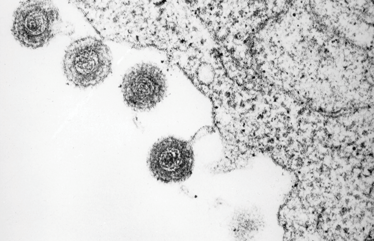Subpar Screening
Screening for herpes in asymptomatic people may not be the best course of action after all

“The CDC estimates that almost one in six people in the US between the ages of 14 and 49 is infected with genital herpes,” says Kirsten Bibbins-Domingo, Chair of the US Preventative Services Task Force (USPSTF). It’s this high prevalence that drove the USPSTF recommendation on serologic screening for genital herpes in asymptomatic, pregnant women, adults, and adolescents back in 2005. But is this broad-brush approach a good one? Based on more recent evidence, the Task Force now doesn’t seem to think so, and it’s calling for a rethink (1).
The sexually transmitted infection is caused by subtypes of the herpes simplex virus – HSV-1 and HSV-2 – that can cause blisters, ulcers, aches, swollen glands, and fevers. However, a portion of HSV carriers appears asymptomatic, and the CDC states that most infections are spread by patients who are unaware that they have the virus (2).
“It’s important to remember that any test a primary care physician does on a healthy person can potentially have both beneficial and harmful outcomes,” reminds Bibbins-Domingo, so “it’s important to focus on screening tests that we know, on balance, are effective.” After a systematic review of the evidence, the USPSTF determined that “it was not beneficial to screen for genital herpes in adolescents and adults who have no signs or symptoms, including pregnant women – who can transmit HSV to their newborns during childbirth,” she adds. Since the infection cannot be cured and test results are, at times, inaccurate, the Task Force sees the screenings of asymptomatic patients as causing more harm than good. Its paper cites that a screening of 10,000 patients would result in approximately 1,485 true-positive results and 1,445 false-positive results (1).
Bibbins-Domingo and her team now believe the current best course of action is to halt the existing asymptomatic screening method, but she encourages investigators to help find an alternative. “The Task Force is calling for more research to better understand the detection and management of genital HSV infections in people without signs or symptoms, including studies that would support the development of screening and diagnostic tests that have higher specificity and can detect both types of genital herpes infections. We are always interested in reviewing new research that can help inform future recommendations.”
- US Preventative Services Task Force et al., “Serologic screening for genital herpes infection: US Preventative Services Task Force recommendation statement”, JAMA, 316, 2525–2530 (2016). PMID: 27997659.
- Centers for Disease Control and Prevention, “Genital HSV infections”, (2015). Available at: bit.ly/2lFR3uS. Accessed February 13, 2017.
My fascination with science, gaming, and writing led to my studying biology at university, while simultaneously working as an online games journalist. After university, I travelled across Europe, working on a novel and developing a game, before finding my way to Texere. As Associate Editor, I’m evolving my loves of science and writing, while continuing to pursue my passion for gaming and creative writing in a personal capacity.




















